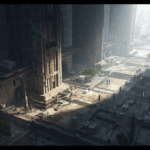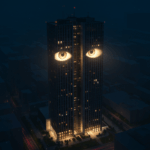In an era where urban spaces are evolving rapidly, lighting engineering plays a crucial role in shaping the modern cityscape. Effective lighting not only enhances the aesthetic appeal of urban environments but also improves safety, functionality, and energy efficiency. Lighting engineering consultation is essential for optimizing these aspects in urban development projects. This comprehensive guide explores the significance of lighting engineering consultation and how it can illuminate the future of urban development.
The Role of Lighting Engineering in Urban Development
Lighting engineering encompasses the design, implementation, and management of lighting systems to meet specific needs and objectives. In urban development, lighting engineering focuses on creating environments that are visually appealing, safe, and functional. Key aspects include:
Aesthetic Enhancement:
- Designing lighting solutions that highlight architectural features, public spaces, and natural elements to create an attractive urban environment.
Safety and Security:
- Implementing lighting systems that improve visibility and deter crime, ensuring safe navigation and secure public spaces.
Functionality and Efficiency:
- Optimizing lighting for various urban functions, such as traffic management, pedestrian areas, and recreational spaces, while minimizing energy consumption.
Sustainability:
- Incorporating energy-efficient lighting technologies and sustainable practices to reduce the environmental impact of urban lighting. Key Considerations for Urban Lighting Design
Effective lighting engineering consultation involves addressing several critical factors to achieve successful urban development outcomes:
Project Scope and Objectives
Understanding the specific goals of the urban development project is fundamental. This includes identifying the desired outcomes for aesthetic appeal, functionality, and safety. Key considerations are:
- Design Goals: What are the primary objectives for the lighting design? Are they focused on enhancing aesthetics, improving safety, or supporting specific functions?
- Environmental Impact: How will the lighting design affect the surrounding environment and existing infrastructure?
Lighting Technology and Innovation
Choosing the right lighting technology is essential for achieving optimal results. Advances in lighting technology offer numerous options:
- LED Lighting: Known for its energy efficiency, long lifespan, and versatility, LED lighting is a popular choice for urban environments.
- Smart Lighting Systems: Incorporating sensors and controls to adjust lighting based on real-time conditions, such as traffic flow or ambient light levels.
- Decorative Lighting: Utilizing architectural and decorative lighting to enhance the visual appeal of public spaces and landmarks.
Compliance with Standards and Regulations
Adhering to local and international lighting standards and regulations ensures that the lighting design meets safety and performance criteria:
- Illuminance Levels: Meeting recommended levels of illumination for various urban areas, including streets, parks, and public buildings.
- Light Pollution Control: Designing lighting solutions that minimize light spill and glare to protect the night sky and surrounding residential areas.
- Energy Efficiency Standards: Complying with regulations that promote energy-efficient lighting technologies and practices.
Integration with Urban Infrastructure
Effective lighting design should integrate seamlessly with existing urban infrastructure:
- Architectural Integration: Aligning lighting solutions with the architectural style and design of buildings and public spaces.
- Utility Coordination: Collaborating with utility providers to ensure that lighting systems are compatible with existing electrical infrastructure.
- Maintenance and Support: Planning for ongoing maintenance and support to ensure the longevity and reliability of the lighting systems. The Benefits of Lighting Engineering Consultation
Engaging with lighting engineering consultants provides several advantages for urban development projects:
Expertise and Innovation:
- Consultants bring specialized knowledge and innovative solutions to address complex lighting challenges and enhance urban environments.
Customized Solutions:
- Tailoring lighting designs to meet the specific needs and goals of the project, ensuring optimal performance and impact.
Project Efficiency:
- Streamlining the design and implementation process to achieve timely and cost-effective results.
Sustainability and Compliance:
- Ensuring that lighting solutions are environmentally friendly and meet regulatory requirements. Case Study: Transforming Dubai’s Urban Landscape with Innovative Lighting
Dubai, a city renowned for its ambitious urban development projects, provides a compelling example of how lighting engineering consultation can enhance urban environments. The Dubai Water Canal project is a notable case:
Project Overview
The Dubai Water Canal, an extensive development featuring waterfront promenades, bridges, and public spaces, required a comprehensive lighting strategy to highlight its architectural features and ensure safety.
Key Aspects of the Lighting Design
Aesthetic Enhancement:
- Using dynamic lighting to accentuate the canal’s architectural features and create a visually stunning environment.
Safety and Security:
- Implementing well-lit pathways, bridges, and public areas to enhance safety and security for residents and visitors.
Sustainability:
- Incorporating energy-efficient LED lighting and smart controls to minimize energy consumption and environmental impact.
Integration with Infrastructure:
- Coordinating with existing infrastructure to ensure seamless integration and functionality. Outcomes and Impact
The lighting design for the Dubai Water Canal successfully transformed the area into a vibrant and inviting space, enhancing its appeal and functionality while maintaining a focus on sustainability and safety.
Conclusion
Lighting engineering consultation is pivotal in shaping the future of urban development projects, providing expertise and innovative solutions to enhance aesthetic appeal, safety, and functionality. By understanding the intricacies of lighting design and incorporating advanced technologies, urban spaces can be transformed into vibrant, efficient, and sustainable environments. The Dubai Water Canal case study exemplifies the impact of effective lighting design, showcasing how expert consultation can illuminate and elevate urban landscapes.






